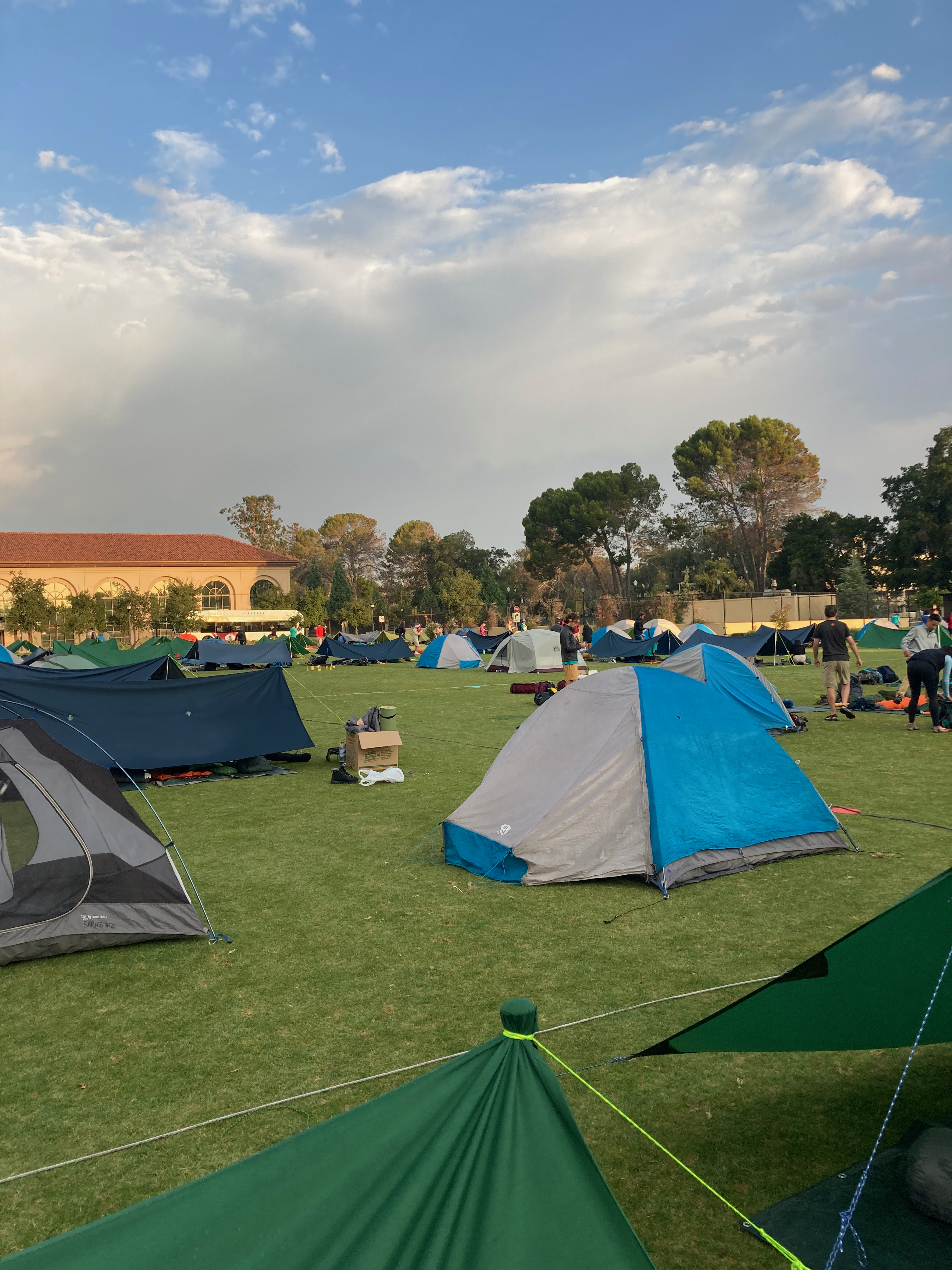Annie Zhu ’25 had never gone camping before her Stanford Pre-Orientation Trip (SPOT), but the prospect of doing something “new and fun with Stanford classmates” drew her to the program.
In the end, SPOT was not only an outdoor adventure, but a way to ease the transition into her freshman year. Before most first-year students arrive on campus for New Student Orientation (NSO) in the fall, a select few frosh are able to settle in earlier through pre-orientation programs.
Pre-orientation programs provide freshmen with a selection of curated experiences meant to enrich their transition into Stanford. The duration of these programs varies between a few days to a full month. All programs end just before the start of NSO.
SPOT, the pre-orientation program that Zhu attended, sticks frosh in a remote location, like Pinnacles National Park and Plumas National Forest, for five and a half days of camping, cooking, hiking and bonding.
“I was definitely less overwhelmed going into NSO knowing that I had already met a portion of the Stanford population,” Zhu said.
Alexander Yue ’27 skipped out on camping and instead chose to participate in Ignite, a student-led program, geared towards exposing frosh to the Haas Center and Cardinal Service through an introduction to public service. The program presents frosh with local public service community partners and guides participants through realizing their own public service identities.
Yue said he hoped to find friends with similar values through Ignite.
Yue said that “the friends [he] made from the Ignite program gave [him] a social support network that boosted [his] confidence and energy going into NSO.”
Ignite and SPOT have fees for participation, but both have financial aid options available.
One of the longer preorientation programs for frosh is the Stanford Summer Engineering Academy (SSEA).
At SSEA, students spend four weeks on campus familiarizing themselves with campus life, engineering courses at Stanford and critical thinking. SSEA is fully funded, meaning the participants attend free of charge, and welcomes applications from all, emphasizing the inclusion of “womxn, first-generation and/or low income, first in their family to study/pursue an engineering degree, or those from environments with limited exposure to engineering curriculum.”
Speaking on her experience in SSEA, Athena Naylor ’27 said, “I got help in academics, guidance from my RA’s and overall great advice that I’ve carried throughout my freshman year.”
“It made me feel a lot more at home in a place so new,” she said.
The Transitional Holistic Readiness Initiative for Vibrant Education (THRIVE) is a program designed to prepare first-generation and/or low-income (FLI) students for success at Stanford. This program acquaints frosh with a “hidden curriculum,” typically unavailable to FLI students and fosters community between students with a shared background.
THRIVE was created by the First Generation and/or Low-Income Student Success Center (FLISSC).
Thrive’s mission, according to the website, is “to help students build community through engaging with each other in tough conversations, as well as activities that will help them bond.”
“It really doesn’t hurt to meet new people, learn the campus whereabouts early and make so many friends and fun summer memories along the way,” Naylor said.
